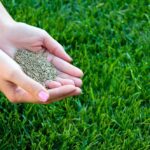Sustainable gardening is the practice of creating an environment that supports the natural environment as well as human life. This is a holistic approach that integrates design principles such as planning, technology, materials and land use.
Sustainable gardening is actually very beneficial because it teaches children the importance of giving back to the environment, and can also help in lowering your energy bills, especially when you decide to plant native shade trees.
In this article, you can read more about tips to make your garden sustainable.
1. Composting
Composting in the garden is a great way to reduce your carbon footprint and improve soil quality. Composting also allows the entire household to reduce food waste problems, as seen in this video.
Your first step towards a healthy garden is making a compost. This will start by collecting your garden scraps, including fruit peelings, vegetable peelings, grass clippings, leaves, and other plant debris.
Composting is very beneficial to you as a gardener. As long as you start with the proper tools, you can develop a rich and fertile soil that will nourish your plants. As your plants grow, they will use the nutrients from the soil, and you will have rich, thriving plants.
If you don’t want to make the compost by yourself, Maze composting products are some of the examples of ready-made composting products you can explore in the market.
2. Organic Gardening
Organic gardening techniques are also called “green gardening”. Organic gardening has become increasingly popular due to its natural advantages and also because it does not require much labor and is very sustainable.
These practices are based on a theory of soil fertility, which means that the soil should contain the appropriate minerals and nutrients in the correct balance, in order for plants to grow. In other words, the soil must be able to support plant growth and development.

The most common organic gardening practices include mulching, composting, using organic fertilizers, and using natural predators to control pests. In addition to these practices, organic farmers usually also use organic pest control.
There are many plant care tips available online, in books and magazines, and in the newspaper. Some of these tips are easy to follow while others may require some special knowledge.
Organic gardening does not have to be difficult at all. Just follow the right steps and you will reap the rewards of a healthy, delicious harvest.
3. Zero-waste Garden
A zero-waste garden is about using the environment and its resources in the most efficient way possible. A waste of resources in this case can be defined as taking any form of resource or product that could be useful but is not currently being used. It can also include recycling, which is taking something from one source and reusing it for another. Another term for recycling is ‘degreasing’. This means that the material is turning back into its original state, usually by absorbing it into the soil in some way.
To create a zero-waste garden there are a few things that should be considered. First is the amount of materials that need to be recycled. This depends on the size of your garden, but the general rule is that you should have enough waste for the space that you want to fill and to cover all areas of your garden.
Second is how much waste you have to create. If you have a very large area, then you need to be careful with the type of waste materials that you use in your garden.
The best way to go about planning your garden is to make sure that you do not waste materials when creating it. By making sure that you use the most effective and renewable and biodegradable waste materials that you can, you will ensure that your garden is truly eco-friendly.
4. Grow Your Own Food
Contrary to popular belief, sustainable gardening isn’t all about filling your outdoor space with flowers and shrubs; you can also utilize your sustainable garden to grow your own food. Aside from working towards living a sustainable lifestyle, growing your own food can help you save money in the long run as you don’t have to spend just so you can have fresh produce.
Since you’re the boss in your own sustainable garden, you can have the liberty of picking any vegetable you want. There are many different vegetables that you can grow in your garden, such as beans, squash, broccoli, onions, tomatoes and cabbage. You can even grow spinach and kale if you have the space. You can even ask your family’s favorite vegetables, and choose to plant their preferences in your garden.
It is best to grow your food in an area that gets enough sunlight, but is also away from direct exposure to the elements. The area should be cool and moist so that the roots of your plants can absorb water without the soil drying out.
Conclusion
Sustainable gardening is a new term that describes the practice of creating beautiful landscapes using only naturally occurring resources. By using only sustainable resources, we are not harming nature. We are simply working to help nature flourish and maintain its balance.






